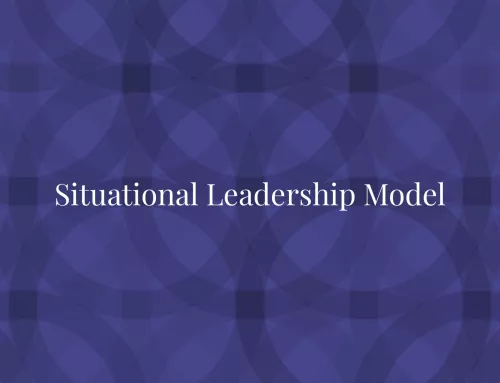Abraham Maslow created a psychological theory of human motivation in which he proposed that to achieve high-level motivation or self-actualization, more basic needs must first be met. Maslow’s Hierarchy of Needs is a psychological theory of human motivation. The original theory consists of a five-tier model of human wants divided into deficiency needs and growth needs. These needs are represented as hierarchical levels within a pyramid. Often, the first four levels are referred to as deficiency needs (D-needs). The top level is known as growth or being needs (B-needs).
Deficiency needs
Deficiency needs arise due to deprivation and are said to motivate people when they are unmet. Also, the motivation to fulfill such needs will become stronger the longer the duration they are denied. For example, the longer a person goes without food, the more hungry they will become. When a deficit need has been more or less satisfied, it will go away. Subsequently, we direct our activities towards meeting the next set of needs that we have yet to satisfy. These then become our salient needs.
Physiological needs
These are biological requirements for human survival. Examples include air, food, water, shelter, clothing, warmth, sex and sleep. Maslow’s hierarchy of requirements places physiological demands at the bottom. They are the most important things a person requires to survive. At this level, a person’s drive stems from their instinct to survive. If these needs are not satisfied the human body cannot function optimally. Maslow considered physiological needs the most important as all the other needs become secondary until these needs are met.
Safety needs
Safety requirements make up the second level of Maslow’s hierarchy of needs. Once an individual’s physiological needs are satisfied, the needs for security and safety become salient. Security and Safety requirements refer to the urge that a person feels towards safety and security in their life and surroundings.
People want to experience order, predictability and control in their lives. The demand for law and order, as well as protection against unpredictable and harmful situations, drives motivation. These needs can be fulfilled by the family and society (e.g. police, schools, business and medical care).
A person must consider their physical safety in order to obtain stability and security. This entails finding shelter from the outdoors, dangerous situations, or health hazards and illness. Furthermore, in order to survive and prosper in modern society, an individual needs economic security. This relates to the requirement for work stability, consistent income, and savings. One approach to gaining economic safety is to master suitable investing methods.
Examples include protection from elements, security, order, law and stability.
Love and belongingness needs
The third level of Maslow’s hierarchy of needs is love and belongingness needs. After physiological and safety needs have been fulfilled, the third level of human needs is social and involves feelings of belongingness. Belongingness, refers to a human emotional need for interpersonal relationships, affiliating, connectedness, and being part of a group.
Humans are social creatures that crave interaction with others. This level of the hierarchy outlines the need for friendship, intimacy, family, and love. Humans have the need to give and receive love; to feel like they belong in a group. When deprived of these needs, individuals may experience loneliness or depression.
These are the first of social needs, involving the desire for interpersonal relationships and being part of a group. Examples of these needs include friendship, intimacy, trust, acceptance, receiving and giving affection and love.
Esteem needs
Emotional needs are the fourth level of Maslow’s hierarchy of needs. Esteem requirements refer to a person’s need for self-worth, accomplishement, recognition, status, and respect. Once once satisfies his / her love and belonging requirements, they strive to satisfy their esteem needs.
Maslow classified esteem needs into two categories:
- Self-esteem, stemming from dignity, achievement, mastery and independence
- The desire for reputation or respect from others, including status and prestige
Maslow indicated that the need for respect or reputation is most important for children and adolescents and precedes real self-esteem or dignity.
Growth needs
Growth needs do not stem from a lack of something, but rather from a desire to grow as a person. Every person is capable and has the desire to move up the hierarchy toward a level of self-actualization. Once these growth needs have been reasonably satisfied, one may be able to reach the highest level called self-actualization. However, we will continue to feel our growth needs once they are engaged and may even become stronger.
Maslow later modified the theory to include three additional needs, namely cognitive, aesthetic and later transcendence needs.
Cognitive needs
In accordance with Maslow’s reasoning, you will enhance your knowledge if you feel deficient knowledge requirements. Cognitive requirements express our need to study, experiment with, and learn how the world works to broaden our understanding. This is an important step toward self-actualization since it requires you to expand your mind and explore new ideas based on facts
Aesthetic Needs
Maslow Fulfilling your aesthetic demands is the next step toward self-actualization.
You will want to fulfil your aesthetic demands once you have addressed your cognitive needs. This might mean enjoying the wonderful things in life, but it can also mean finding balance. Nature walks, for example, might leave us feeling revitalized. Similarly, listening to music may leave us feeling revitalized.
Self-Actualization needs
The fifth level of Maslow’s hierarchy of needs is self-actualization needs. Self-actualization needs are the highest level in the original theory propounded by Maslow. It refers to the realization of a person’s potential, self-fulfillment, seeking personal growth and peak experiences. Maslow describes this level as the desire to accomplish everything that one can, to become the most that one can be. At this level, people strive to become the best that they possibly can be.
Examples include realizing personal potential, self-fulfillment and seeking personal growth and peak experiences. These needs are prioritized from the bottom of the hierarchy to the top, with the bottom of the pyramid must be met before a person can attend to higher level requirements. Individuals may perceive or focus on this need very specifically. The desire may be expressed economically, academically or athletically, creatively, etc.
Transcendence needs
A person is motivated by values which transcend beyond the personal self (e.g., mystical experiences and certain experiences with nature, aesthetic experiences, sexual experiences, service to others, the pursuit of science, religious faith, etc.).
Dynamics
Maslow initially stated that individuals must satisfy lower level deficit needs before progressing on to meet higher level growth needs. However, he later clarified that satisfaction of a needs is not an all-or-none phenomenon.
Maslow also proposed the concept of changing needs: once one need is fulfilled, we crave the need above it. The raise we earned last year will not drive us for the next five years, the recognition award we received two years ago will not fulfill our current desire for appreciation, and the training course we completed three years ago will not satisfy our current need to develop new skills and information.
Often, progress is often disrupted by a failure to meet lower level needs. Life events, such as demise, divorce or losing a job may cause an individual to fluctuate between levels of the hierarchy.
Therefore, not everyone will move through the hierarchy in a uni-directional manner but may move back and forth between the different types of needs.
Case Study – HBO CSR
To achieve the pinnacle of this workplace motivation theory, an employee should be self-actualized. This means that employees should realize their talents, abilities, and what they’re capable of handling. Individuals who have attained the top level of Maslow’s Hierarchy of Needs make up a healthy and engaged workforce.
The HBO Corporate Social Responsibility team brings together HBO workers, talent, and non-profit partners to make an impact on social issues that are relevant to their industry and communities. Leadership should encourage employees to educate, act, and contribute to make the world a better place.
In-line with the philosophy advocated by Maslow, employers such as Microsoft, Apply provide bicycles to commute, Gaming centers, and also eco-friendly furniture in order to make their lives more comfortable and always in search of ways to ensure the morale and wellbeing of their employees
Employers with low engagement rates frequently have higher turnover rates, as well as low morale and unhappy employees. By investing in its employees’ overall happiness, a company can increase satisfaction while also increasing engagement and motivation, which has a positive impact on productivity.
Advantages
- Simplicity: The most significant feature of Maslow’s theory of motivation is that it is simple to comprehend, and even lay people can understand and connect to it because we all pass through one or more stages of the needs pyramid during our lives
- Relevant across fields: It is applicable in almost all aspects of life because whether you are at home or at work, you begin with basic needs. For example, at home, you prioritize making the necessary arrangements to provide food for your family on a daily basis. Subsequently, you secure your home to dissuade intruders. Once your security and food are provided for, you move on to social affection by inviting relatives and friends to your home. You follow on by decorating your home with expensive furniture and showpieces
- Considers human nature: This theory considers basic human nature that demands more when individuals meet their lower-level requirements
Disadvantages
- All individuals won’t think in same way as assumed by the theory Maslow proposes: The main disadvantage of this theory is that not all people think the same way, so for some people, social affection and respect are more important than safety needs, which is why many people do grand ceremonies for their children’s birthdays or marriages, or buy expensive cars to show off to society before buying insurance for the family or buying a house for the family because they get more satisfaction from showing off
- Difficulty in measuring the parameters: It is impossible to quantify the pleasure that one feels after meeting each degree of need. This is because achievements are subjective in nature and no algorithm can anticipate such events. As a result, some people will be content even after meeting their physiological and safety demands, whilst others would not be pleased even after meeting all of their needs
- Cultural differences: Maslow hierarchy does not factor the inevitable cultural disparities that exist across nations because each nation or country has a unique culture that poses issues




